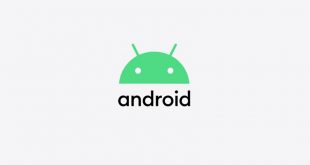The Nokia Lumia Icon and the Sony Xperia Z2 have been called the best smartphones of 2014, as well as the best Windows and best Android phones your money can buy. Taking into consideration that there have been quite a few new launches since the Nokia Lumia Icon and Sony Xperia Z2 were launched in February 2014, things might have changed. Since February, we’ve seen the Samsung Galaxy S5, Galaxy Alpha, Galaxy Note 4, Galaxy Note Edge, Sony Xperia Z3, Xperia Z3 Compact, HTC One M8, One M8 Windows, Lumia 630, Lumia 635, LG G3, Sony Xperia T3, HTC Desire 820, iPhone 6, iPhone 6 Plus, Huawei Ascend Mate 7, Xiaomi Mi4, Meizu MX4 and more.
Nonetheless, the Nokia Lumia Icon is still considered by many to be the best Windows phone you can get out there, whilst the Sony Xperia Z2 has been surpassed by its Xperia Z3 and Z3 Compact successors. Still, both phones are top notch smartphones and since they are a bit outdated, if we think about how many new affordable smartphones have been launched since February, they can be found at affordable and discounted prices, which makes them quite desirable.
The Nokia Lumia Icon currently retails for $499 off-contract at the Microsoft store, whilst you can get the Sony Xperia Z2 for $525 off-contract. These prices are certainly not the lowest you can pay for a high-end smartphone, seeing as the Meizu MX4 which is highly regarded by many, retails for just $320. Nonetheless, they are certainly cheaper than other flagships like the Galaxy S5 or iPhone 6. Since there’s such a small difference between the prices of the Nokia Lumia Icon and the Xperia Z2, price should not be a determining factor in the comparison of the two flagships.
The Nokia Lumia Icon is a Windows 8.1 device with a 5 inch AMOLED display with 1080*1920 resolution, featuring a ClearBlack display and Corning Gorilla Glass 3 screen protection. It weighs 167 grams and has a 137 mm height, 71 mm width and 9.8 mm thickness. The Nokia Lumia Icon is a pretty bulky smartphone compared to the Sony Xperia Z2, but it’s not an uncomfortable device thanks to its solid build and attractive design. It has a rounded back cover made of polycarbonate and has a soft touch to it. It’s also available in vibrant orange green finishes, which are quite appealing.
The Nokia Lumia Icon features Dolby stereo speakers, which offer great sound quality, well above many other smartphones out there, but not nearly as awesome as the BoomSound speakers on the HTC One M8. The Nokia Lumia Icon is powered by a quad core Snapdragon 800 CPU clocked at 2.2 GHz, backed by 2 GB RAM and 32 GB internal storage, but with no microSD card slot to expand that space and an Adreno 330 GPU. There’s no IR blaster on the Nokia Lumia Icon, but it does feature NFC, Bluetooth 4.0 and a 2420 mAH battery providing the juice. The Nokia Lumia Icon has a 20 MP rear shooter with optical image stabilization and a 1.2 MP front camera.
The Sony Xperia Z2 on the other hand is a metal and glass hybrid with a flat and sleek design, prone to smudges and fingerprints, though. It’s a thinner and lighter phone, measuring 147 mm in height, 73 mm in width, 8.2 mm in thickness and weighing 164 grams. Even though the Xperia Z2 is larger than the Nokia Lumia Icon, it does have thinner bezels and a 5.2 inch IPS screen with 1080*1920 resolution, featuring shatter proof glass, triluminous display and the X Reality engine. The Xperia Z2 also has an IP58 certification, which makes it more durable than the Nokia Lumia Icon.
The Xperia Z2 runs on a tad more powerful CPU than the Nokia Lumia Icon, namely a quad core Snapdragon 801 CPU, clocked at 2.3 GHz, Adreno 330 GPU, backed by 3 GB RAM and 16 GB internal storage, expandable via microSD card. The Xperia Z2 doesn’t feature an IR blaster either, but it does have NFC, Bluetooth 4.0 and a 3200 mAH battery, which outdoes the battery on the Nokia Lumia Icon. The Xperia Z2 also has a 20.7 MP rear camera and a 2.2 MP front shooter, but there’s no OIS on the Z2, sadly. The handset runs on Android 4.4 KitKat.
As you can see, there’s not much difference between the Sony Xperia Z2 and Nokia Lumia Icon, and the small differences we did encounter are almost negligible. The AMOLED display on the Nokia Lumia Icon is a bit more vivid, sharp and bright than the IPS display on the Xperia Z2, even though they have the same resolution. Nonetheless, unless you’re looking at the two devices side-by-side, you probably won’t even notice. On the other hand, the app gap between Windows Phone and Android is still there, although the Windows app store is significantly improving day by day.
The cameras on the Xperia Z2 and Nokia Lumia Icon perform exceptionally well, with little difference being noticeable, according to most reviewers. Both smartphone take compelling photos in daylight and low-light conditions as well, with the same amount of detail and quality. Even though the Xperia Z2 has added pixels, and the Nokia Lumia Icon has optical image stabilization, the results of various photo comparisons came back a tie in most cases.
In conclusion, both smartphones are excellent devices which will surely offer top-notch performance, no matter what you are using them for. The only big difference between the two handsets is OS and that’s what you’ll probably have to take into consideration when trying to choose between the Sony Xperia Z2 and Nokia Lumia Icon. Otherwise, you will probably be satisfied, no matter which phone you will end up choosing.
 Load the Game Video Games, Reviews, Game News, Game Reviews & Game Video Trailers
Load the Game Video Games, Reviews, Game News, Game Reviews & Game Video Trailers


